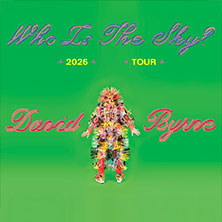
Introduction
David Byrne, the iconic frontman of the Talking Heads, has long been recognized not just for his music but also for his multifaceted contributions to art and culture. His innovative approach to music, performance, and visual art continues to resonate with audiences and musicians worldwide. As one of the luminaries of the New Wave movement, Byrne’s influence extends beyond the realm of music, making him a pivotal figure in contemporary arts.
The Musical Legacy of David Byrne
Born on May 14, 1952, in Glasgow, Scotland, David Byrne moved to the United States in his youth. In 1975, he co-founded the Talking Heads, a band that would redefine American rock music with their eclectic sound and experimental performances. The band’s unique blend of punk, art rock, and world music set them apart in the evolving musical landscape of the late 1970s and early 1980s. Hits like “Psycho Killer,” “Once in a Lifetime,” and “Burning Down the House” showcased Byrne’s artful lyrics and imaginative sound, blending various genres and influences.
Art and Performance Innovations
Byrne is not just a musician; he is also an accomplished visual artist, author, and filmmaker. His 2018 Broadway show, “American Utopia,” was a critically acclaimed exploration of themes like human connection and societal issues. The performance, featuring a blend of his classic songs along with newer material, highlighted his ability to merge music with theatricality and visual art, captivating audiences with a unique experience. Byrne’s ventures into other artistic mediums further demonstrate his desire to challenge conventional boundaries.
Recent Endeavors and Continued Influence
In recent years, Byrne has continued to explore new territories in both music and art. His recent collaborations with other artists and involvement in projects like the documentary “Stop Making Sense” underline his enduring relevance in contemporary culture. Byrne’s continued emphasis on social issues through his art and his passion for community-based projects show his dedication to using art as a platform for change.
Conclusion
As David Byrne continues to break new ground in his artistic endeavors, his influence on music, visual arts, and culture remains profound. His ability to adapt and explore new forms of expression stands as a testament to his creativity and vision. For audiences and aspiring musicians alike, Byrne serves as an inspiration, proof that art can transcend boundaries and address both personal and societal issues. With the ever-evolving landscape of culture, Byrne’s contributions will undoubtedly continue to inspire future generations.



